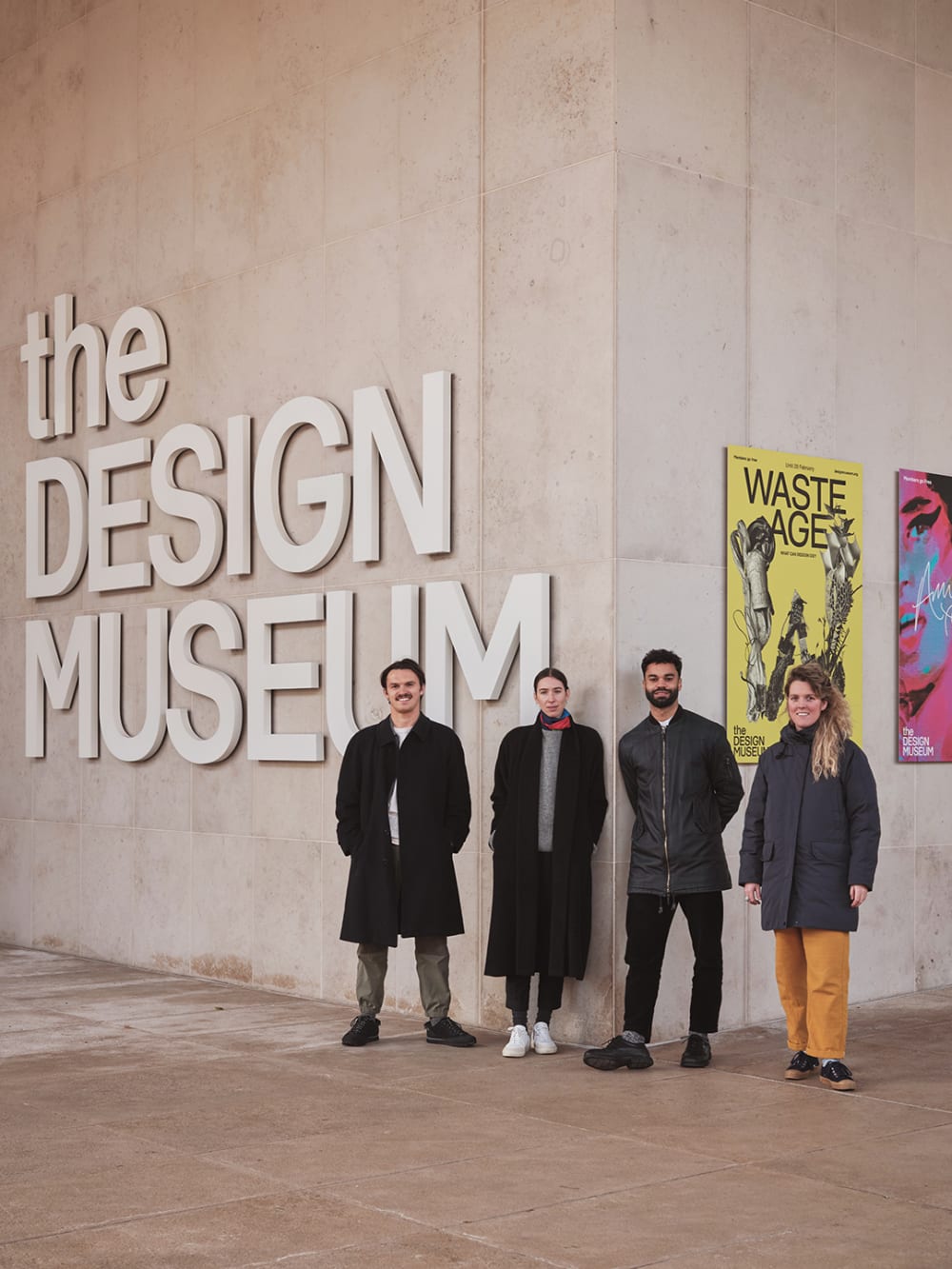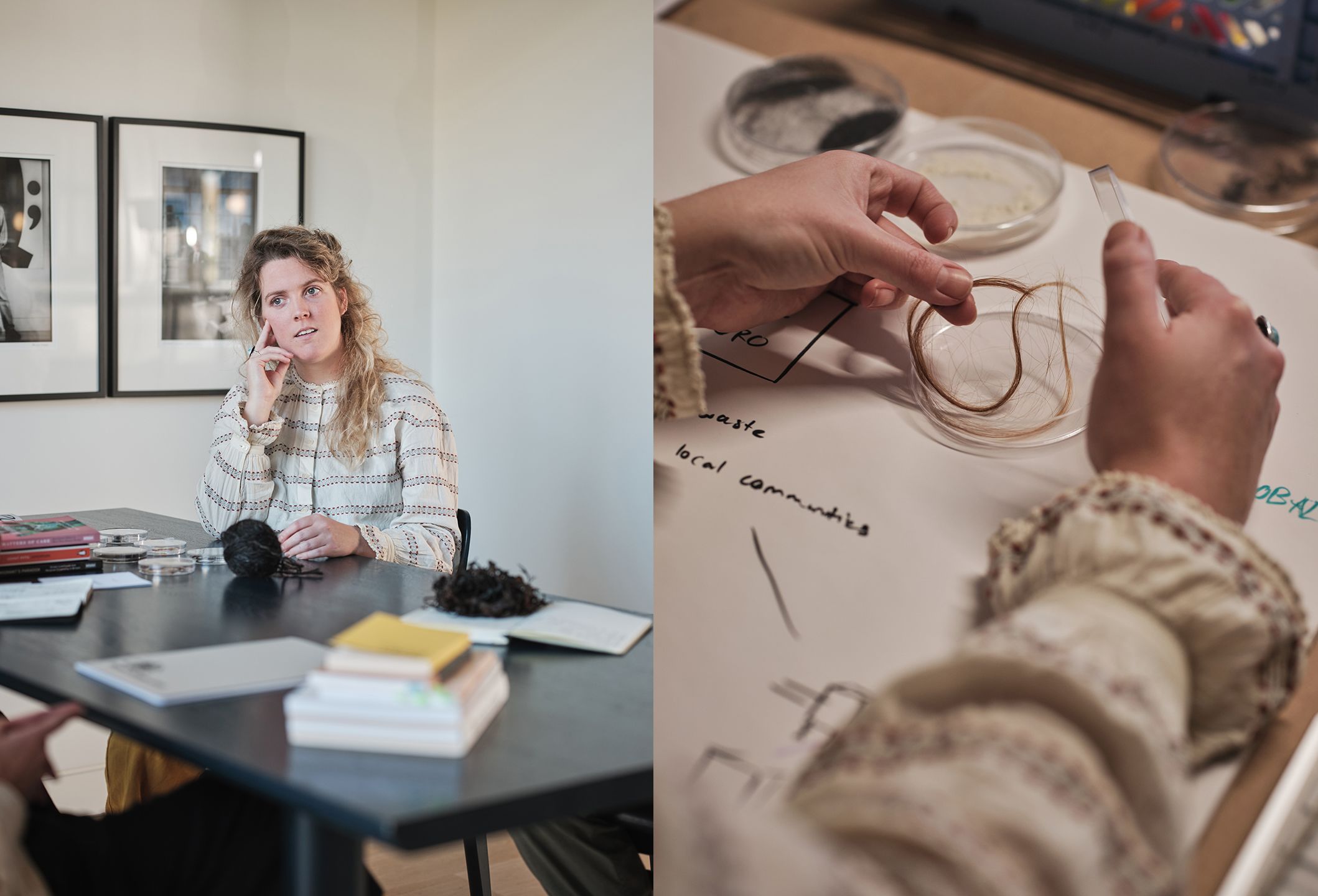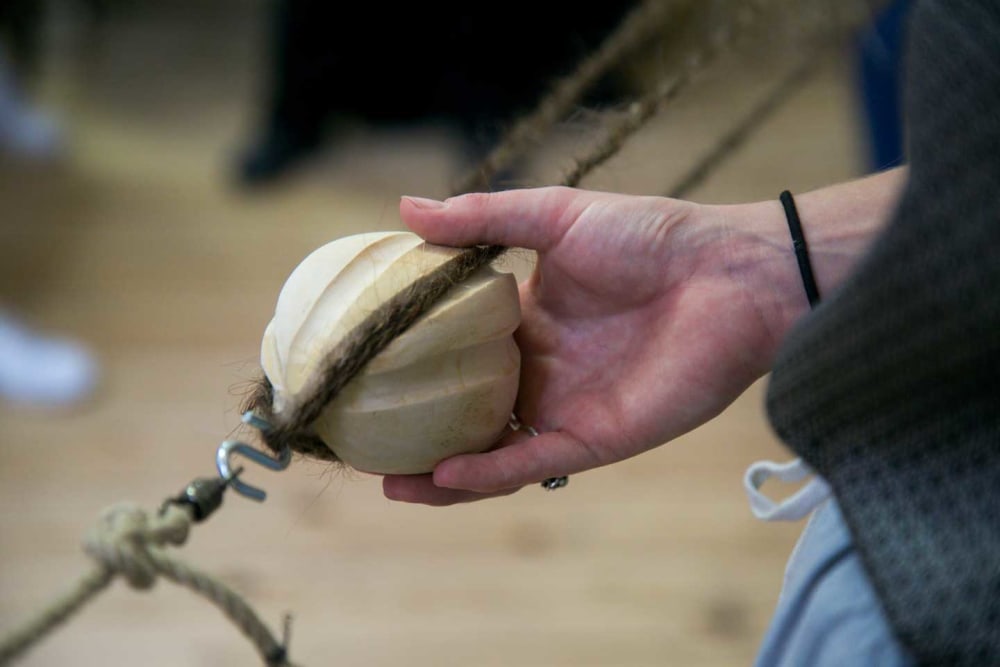
Hair, the unexpected material – a conversation with design researcher Sanne Visser

- Written byAlexandra R. Cifre
- Published date 25 March 2022

Sanne Visser’s fascination with hair started during her time as a student on the MA Material Futures at Central Saint Martins. In the last few years, she has become an internationally renowned maker for her knowledge in material innovation and sustainable design, which has led her to pursue a PhD at UAL’s Centre for Circular Design. She has now joined the Design Museum’s Design Researchers in Residence as part of the national Future Observatory programme, where she will continue to explore the potential uses of hair as a local waste stream and material resource.
Hi Sanne! Congratulations for being selected to join the Design Researchers in Residence programme. Tell us, what topic will you be exploring?
I have been studying and experimenting with hair for quite a few years and is now the topic of my PhD. As part of this residency, I'll be taking a holistic approach to hair as a waste stream and its potential uses and benefits for local communities from a social, cultural, economic and environmental lens.
I’ll be working closely with people in the boroughs Earls Court and South Kensington in London, seeing how communities are connected around local waste streams. It will be interesting to hear people’s stories and their thoughts and perceptions on hair.
That sounds fascinating. How will the community element work in your residency?
I’m going to collaborate with hair salons in one area – I've already spoken to 15 hairdressers to explain my approach and how we can work together. It’s basically building up relationships and connections with salons and barbers to understand their craft and their industry.
I don't know much about being a hairdresser or the ins and outs of running a shop. There could be some interesting barriers or opportunities that could inform my research, so I’m seeing them as a group of experts.
Whilst I'm working with some scientists at Imperial College London, looking at what can we do with the material from a scientific point of view, I think experts like hairdressers could be as valuable to new findings and unpack some of our problems and complexities around waste, recycling and being regenerative.
You mentioned this work draws from your previous research in this area. When did you first become interested in hair and its potential uses within design practices? And how do you think being part of this residency will help you further your research?
I started having an interest for organic materials during my time at university. I'm not entirely sure what I was doing with it, but I was quite explorative during my Bachelor's degree. When I graduated, I wanted to look at new material innovations and focus on design applications, so I joined the MA Material Futures at Central Saint Martins.
During that time, hair as a material concept kept being in the back of my head, so I chose it as my focus for my final project. That's when I really started to get excited about hair’s value as a design material, how it could be used like any other fiber and understanding its different properties. I ended up developing my own practice, doing a lot of exhibitions and workshops across the UK and internationally.
Being selected for this Research residency makes me immensely proud, because it means hair is being recognised as a valuable material, whether it’s sitting in museums or used in a design context.
I had some connections with Design Museum prior to applying, through previous exhibitions and workshops, and I was very keen to extend my relationship with them. What encouraged me to apply for the Design Researchers in Residence was seeing this as an opportunity to explore hyper local systems and participatory methods, an element within my research which I hadn’t really looked at before in great depth.

You’ll be involved in this programme for a year. What are you most looking forward to during this time?
Many things! First of all, being based at the museum as it’s such an inspiring place, and being able to continue with my research to prove that design can drive real change.
I’m going to be working in an interdisciplinary way, exchanging ideas and findings with other researchers based in the museum, but also visiting hairdressers and barbershops – I'm really looking forward to those conversations. I will also be experimenting with hair during the development and prototyping phase, and it will be great to see how it comes to live in an exhibition that will launch in summer this year. Also, interacting with the public through workshops and panel discussions will be very interesting.
Future Observatory is all about demonstrating how design can help tackling environmental challenges. As a researcher and a designer, why do you think it’s important to include creative disciplines in conversations around climate emergency?
The creative industry is still undervalued in many ways. I guess some companies, researchers and policymakers sometimes don’t fully understand what creativity means or how much it's technically already embedded across all disciplines. Creativity is everywhere.
Disciplines like design have such a dissipative input, it’s a powerful tool for not just understanding materials, but also how to use them across a world full of sociocultural complexities.

Thinking about your experiences, what tips would you share with other fellow makers and designers who want to be more sustainable or innovative in their practices?
First of all, think how you want to go about it. Everyone has their own personal approach to what working more sustainably means. Be ambitious in your ideas, but always remember to be critical and think if you can do what you want to do in diverse ways: Can you use different materials? Have you thought about alternative approaches?
Also, don’t try to reinvent the wheel – something I’ve been told many times. Remember there have been so many amazing innovations and materials developed over time. Like, in my case, hair has been used for centuries across different industries and cultures, and just by looking at those examples I can learn so much about how things were done in the past or why we haven’t done things in a certain way. We tend to call a lot of innovations ‘radical’ or ‘emerging’ because I think it’s easy to throw those words around, but they might not be as radical as you think. You can have crazy or weird ideas and have fun with them, just make sure you do your research as well.
Speaking of doing research, it would be great to understand how you’re going to combine your residency at the museum with your work at Centre for Circular Design, plus doing your PhD. It sounds like 2022 is going to be quite a packed year for you!
Yes, it's a very busy period. But interestingly, it all works in line with each other.
I'm currently a part-time PhD student at Centre for Circular Design and I assist with some research work as well. They're different projects, looking at textile research and textile recycling chains and life cycles, which are very related to what I do. They also tie in with what I teach on the BA and MA Textiles Design at Chelsea College of Arts – I love seeing how students develop their materials and their approaches to waste in general or new materials.
It really is an exciting time for me.
The new age of trichology: harnessing the potential of hair
Find out more about Sanne’s work
Explore other Knowledge Exchange initiatives happening at UAL
If you'd like to collaborate with UAL, get in touch! Email us on business@arts.ac.uk